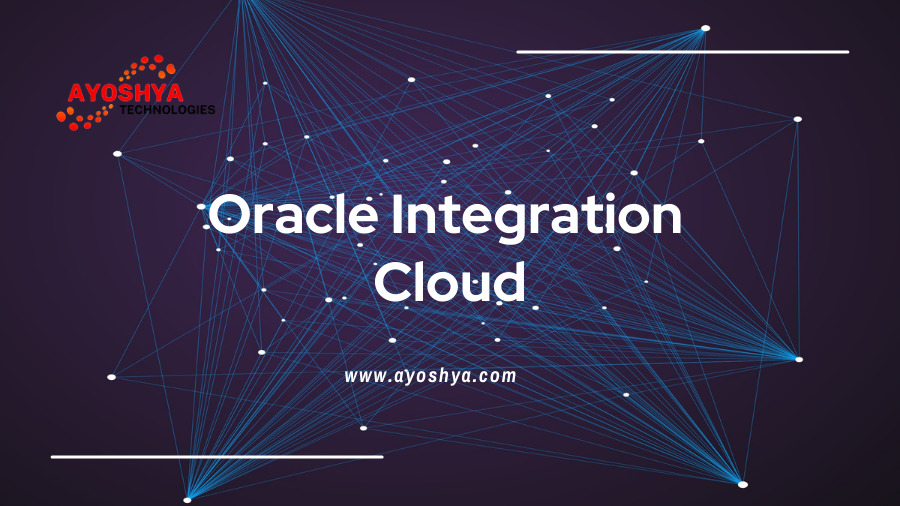Oracle Integration Cloud: Bridging the Digital Divide
In the dynamic realm of digital transformation, businesses are on the constant lookout for tools that can seamlessly integrate their diverse applications and systems. Oracle Integration Cloud emerges as a beacon, offering a comprehensive solution to the ever-evolving integration needs in the digital era.
Introduction to Oracle Integration Cloud
Oracle Integration Cloud, often referred to as OIC, is a robust platform designed to facilitate the integration of various applications within an organization. As businesses navigate the complexities of the digital landscape, the need for a centralized and efficient integration solution becomes paramount.
Understanding Oracle Integration Cloud
At its essence, Oracle Integration Cloud serves as the connective tissue between different software applications. It goes beyond the traditional boundaries, providing a unified platform where data can flow seamlessly, and applications can communicate effortlessly. The core features of Oracle Integration Cloud include adaptability, scalability, and a user-friendly interface that makes integration a breeze.
Benefits of Oracle Integration Cloud
- Streamlining Business Processes: OIC enables the automation of workflows, reducing manual intervention and increasing operational efficiency.
- Enhancing Data Accuracy and Accessibility: The platform ensures that data is not only accurate but also easily accessible across the organization, promoting informed decision-making.
- Cost-effective Solutions: By offering a centralized integration solution, Oracle Integration Cloud eliminates the need for multiple point-to-point integrations, resulting in cost savings for businesses.
Key Components
To understand how Oracle Integration Cloud achieves its seamless integration, it’s essential to explore its key components. From adapters that connect to different applications to integration flows that define how data moves, each component plays a crucial role in the integration process.
Real-world Applications
The true power of Integration Cloud is evident in its real-world applications. Through case studies, businesses across various industries showcase how it has transformed their operations, increased productivity, and driven innovation.
Challenges and Solutions
Integration is not without its challenges. Integration Cloud acknowledges and addresses these challenges, be it handling diverse data formats or ensuring compatibility with legacy systems. The platform provides solutions to navigate through these complexities seamlessly.
Best Practices for Implementation
For businesses venturing into the integration journey, adhering to best practices is key. This section provides valuable insights, offering tips for a smooth implementation process and highlighting common pitfalls to avoid.
Future Trends
As technology evolves, so does integration. Integration Cloud keeps pace with emerging trends, ensuring that businesses adopting the platform are future-proofed. From AI-driven integrations to enhanced analytics, Oracle has a roadmap that aligns with the evolving needs of the digital landscape.
User Testimonials
What better way to understand the impact of Integration Cloud than through the lens of businesses that have experienced it firsthand? Insights from users across industries provide a glimpse into the transformative power of integration Cloud.
Comparisons with Competitors
While the market offers various integration solutions, It stands out. A brief comparison highlights its strengths, emphasizing what sets it apart from competitors. From versatility to scalability, Oracle Integration Cloud emerges as a preferred choice for businesses seeking a robust integration solution.
Security Measures
Data security is a top concern for businesses, especially when it comes to integration. Integration Cloud addresses these concerns with robust security features, including encryption and access controls, ensuring that sensitive information remains protected.
Pricing Models
Understanding the cost implications of adopting a new solution is crucial. This section provides a transparent breakdown of Oracle Integration Cloud’s pricing models, allowing businesses to make informed decisions based on their specific needs and budget.
Step-by-step Implementation Guide
To assist readers in harnessing the power of Integration Cloud, a step-by-step guide provides clear instructions. From initial setup to ongoing monitoring, this guide serves as a valuable resource for those embarking on their integration journey.
Frequently Asked Questions (FAQs)
- Is Oracle Integration Cloud suitable for small businesses?
- Absolutely. It caters to businesses of all sizes, offering scalable solutions tailored to individual needs.
- How does it handle data security?
- It employs advanced security measures, including encryption and access controls, to ensure the confidentiality of data.
- Can I integrate legacy systems with Integration Cloud?
- Certainly. It is designed to seamlessly integrate with legacy systems, preserving existing investments in technology.
- What industries benefit the most from Oracle Integration Cloud?
- Industries such as finance, healthcare, and manufacturing have witnessed significant benefits from Oracle Integration Cloud due to its versatility.
- Is technical expertise required for implementing integration Cloud?
- While a basic understanding of integration is beneficial, Oracle provides user-friendly tools, making implementation accessible to users with varying technical backgrounds.
Conclusion
In conclusion, It stands as a testament to the evolution of integration technology. As businesses embark on their digital journeys, the platform offers a reliable, scalable, and future-ready solution. Embrace the power of seamless integration with Oracle, and unlock new possibilities for your organization.
Read More:
SAP BW on HANA: Accelerating Data Warehousing
Integration cloud system to HANA Cloud Platform using Cloud Connector



